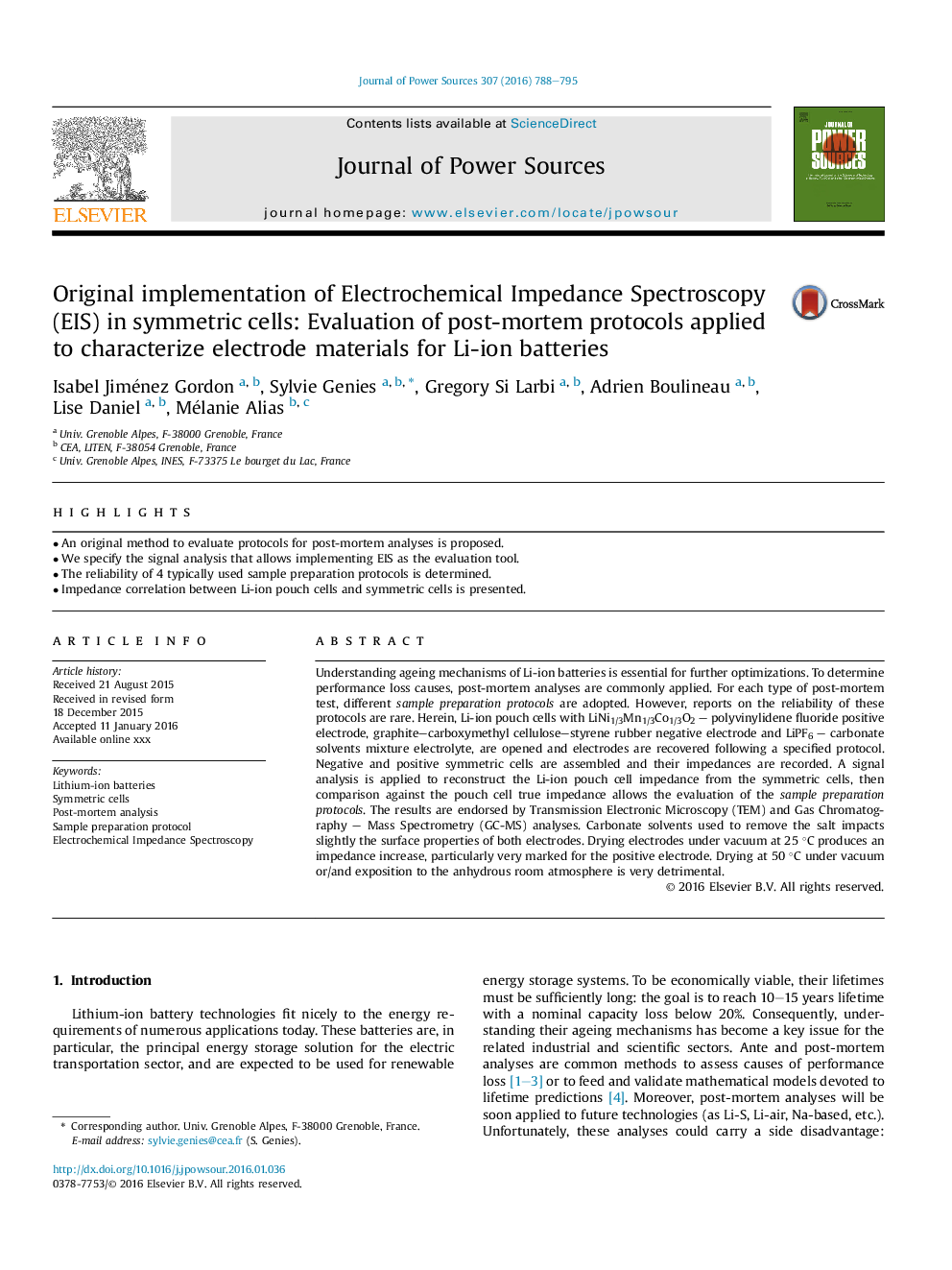| Article ID | Journal | Published Year | Pages | File Type |
|---|---|---|---|---|
| 7729522 | Journal of Power Sources | 2016 | 8 Pages |
Abstract
Understanding ageing mechanisms of Li-ion batteries is essential for further optimizations. To determine performance loss causes, post-mortem analyses are commonly applied. For each type of post-mortem test, different sample preparation protocols are adopted. However, reports on the reliability of these protocols are rare. Herein, Li-ion pouch cells with LiNi1/3Mn1/3Co1/3O2 - polyvinylidene fluoride positive electrode, graphite-carboxymethyl cellulose-styrene rubber negative electrode and LiPF6 - carbonate solvents mixture electrolyte, are opened and electrodes are recovered following a specified protocol. Negative and positive symmetric cells are assembled and their impedances are recorded. A signal analysis is applied to reconstruct the Li-ion pouch cell impedance from the symmetric cells, then comparison against the pouch cell true impedance allows the evaluation of the sample preparation protocols. The results are endorsed by Transmission Electronic Microscopy (TEM) and Gas Chromatography - Mass Spectrometry (GC-MS) analyses. Carbonate solvents used to remove the salt impacts slightly the surface properties of both electrodes. Drying electrodes under vacuum at 25 °C produces an impedance increase, particularly very marked for the positive electrode. Drying at 50 °C under vacuum or/and exposition to the anhydrous room atmosphere is very detrimental.
Keywords
Related Topics
Physical Sciences and Engineering
Chemistry
Electrochemistry
Authors
Isabel Jiménez Gordon, Sylvie Genies, Gregory Si Larbi, Adrien Boulineau, Lise Daniel, Mélanie Alias,
